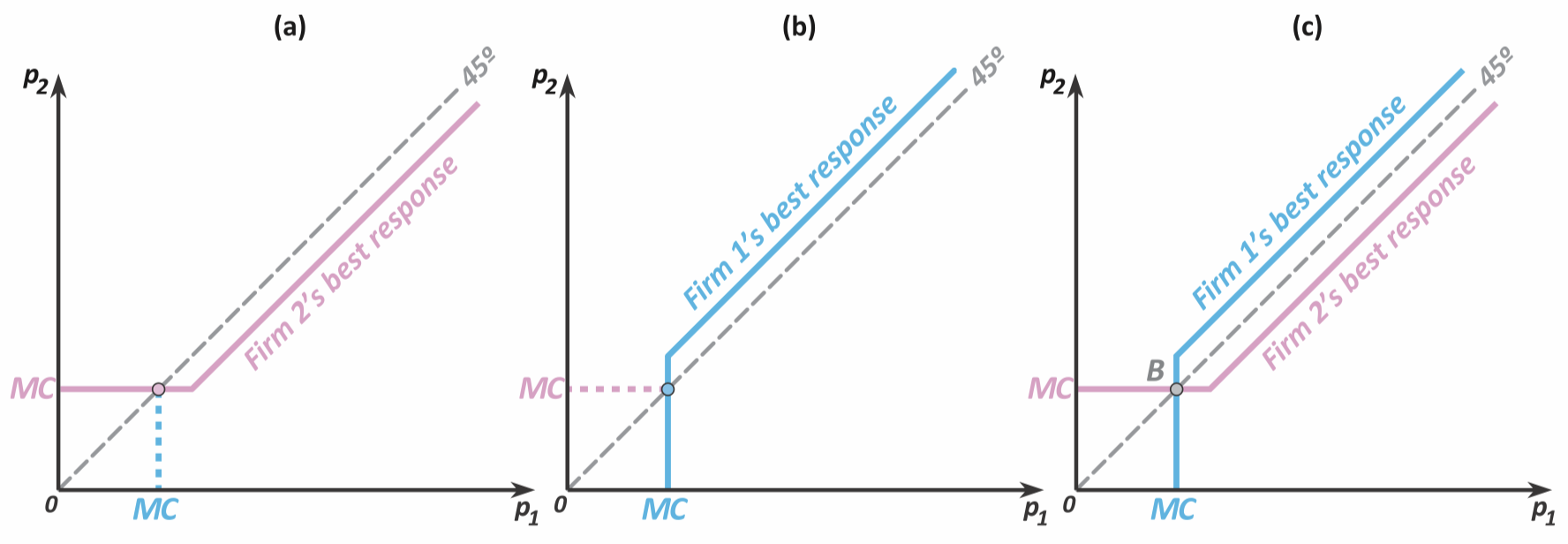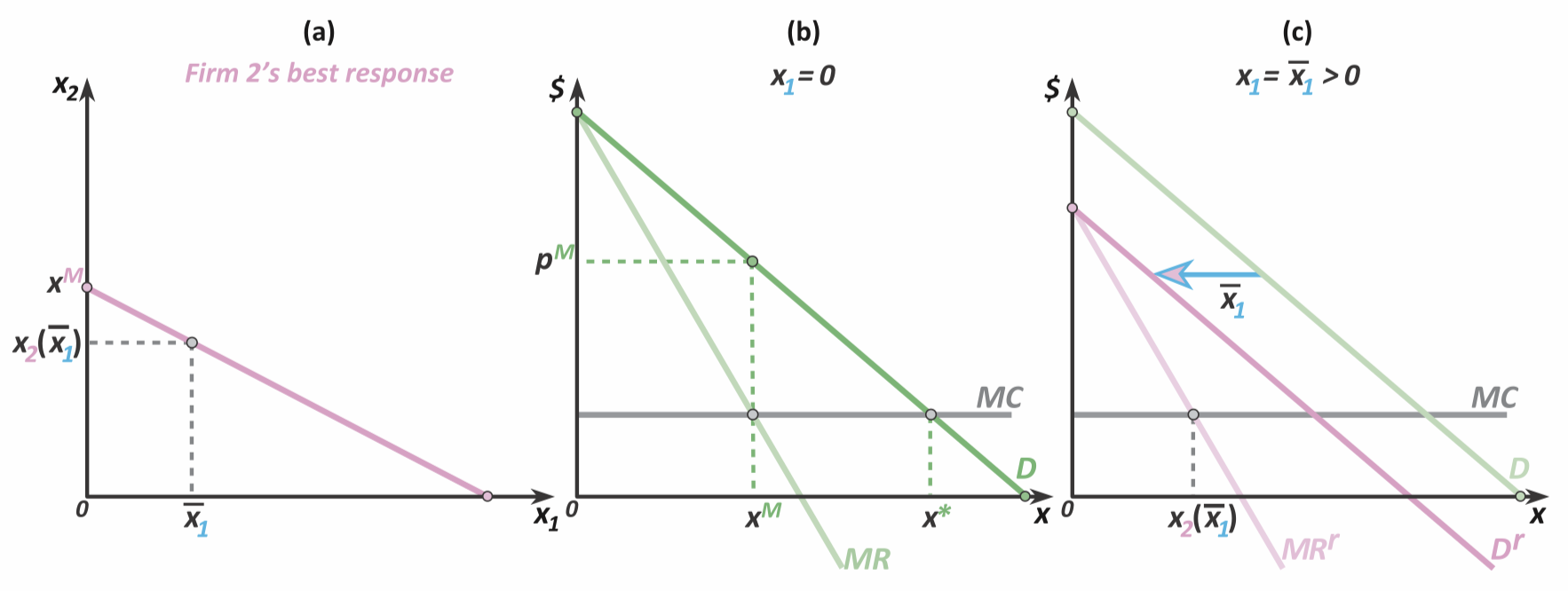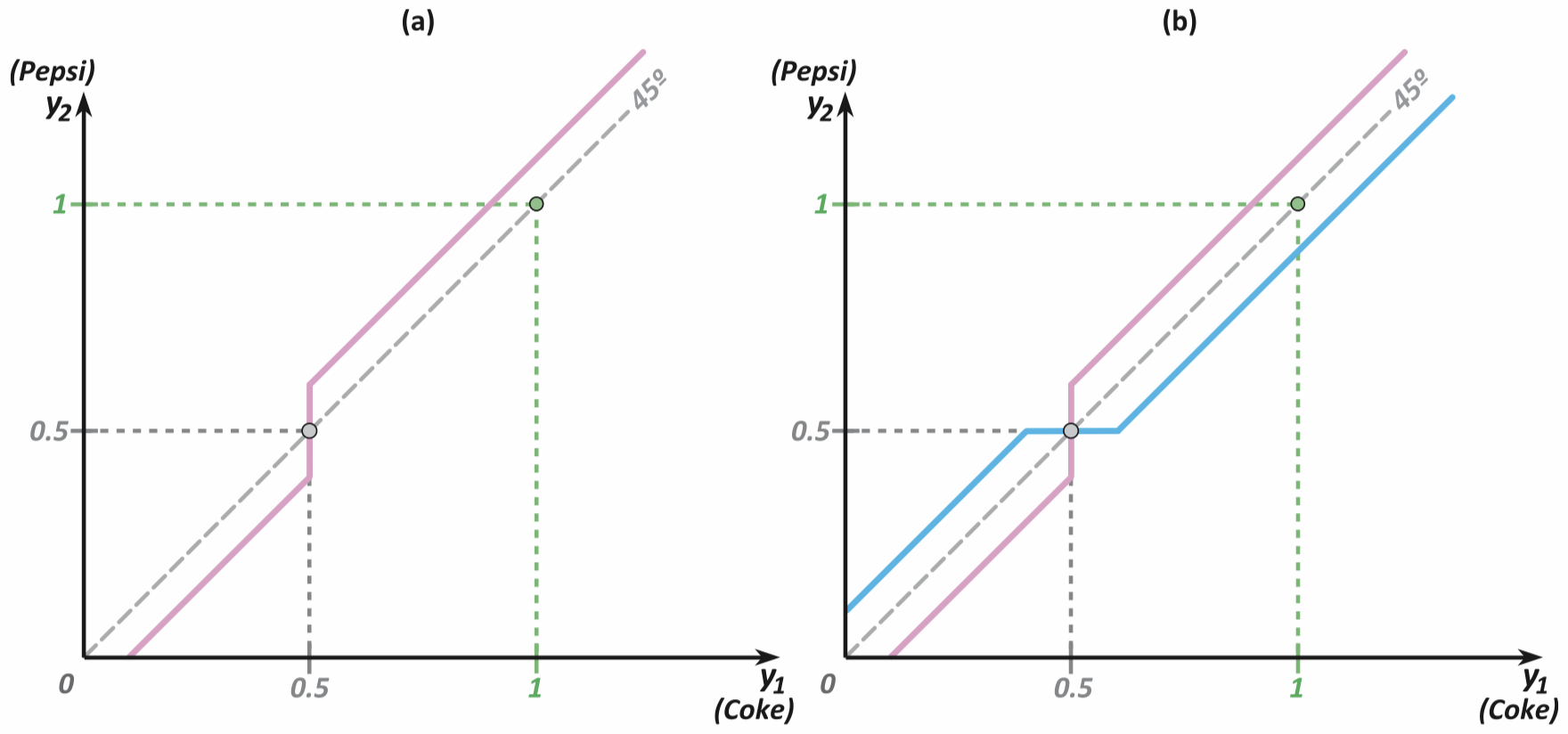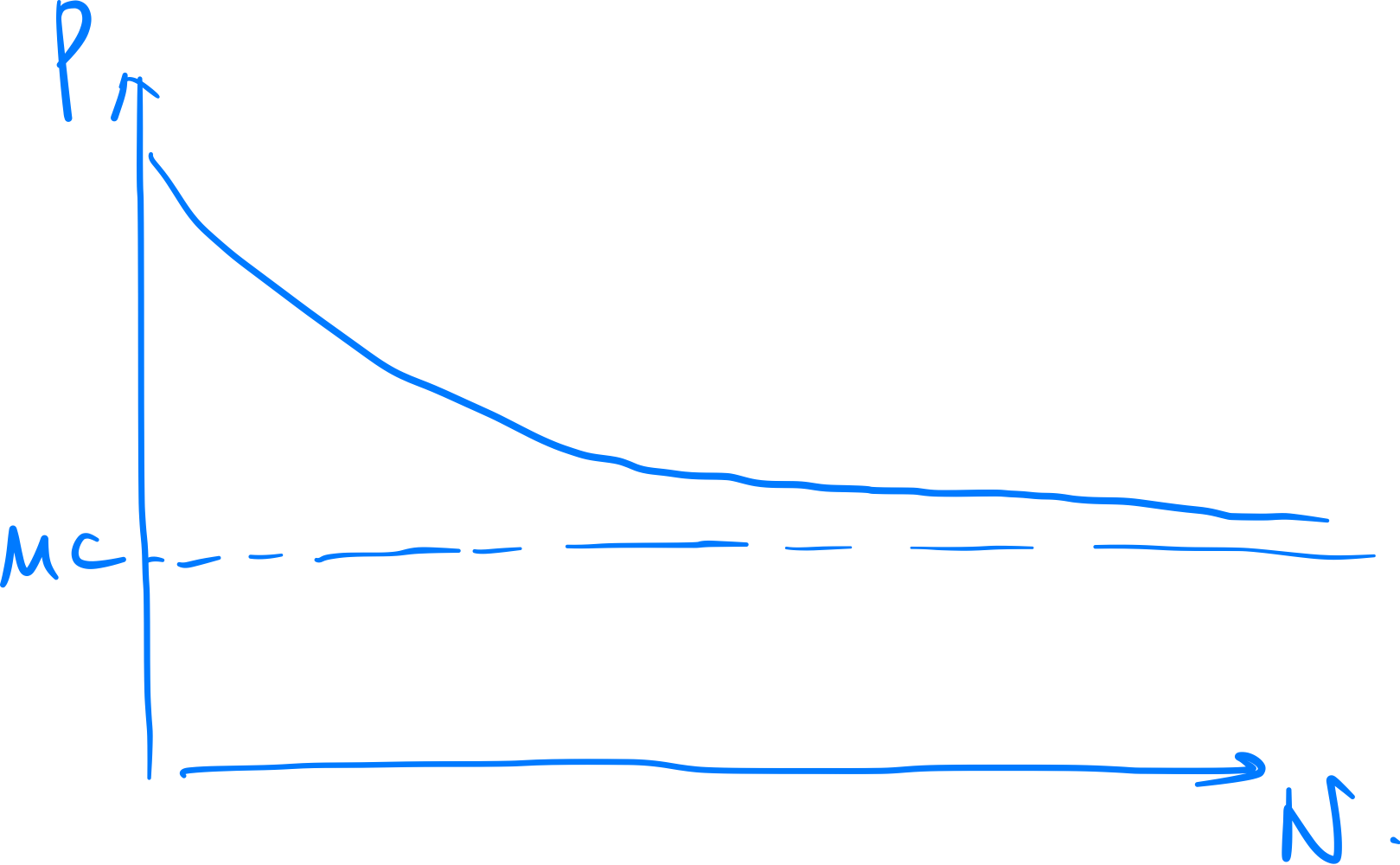Firms will choose price as the strategic variable.
- Market Demand where are constants
- Simultaneous game
- Firm with lower price captures all of demand
Case: Constant and Same Marginal Cost
- Marginal Cost is constant for both firms: ,
- Both firms will attempt to undercut each other.
- where both firms have zero profit

Case: Different but Constant Marginal Cost
- Marginal Cost is constant, but different for both firms
- , ,
- Then…
-
- & firm 1 can set undercut the price because they still have
- Firm 1 will make positive profit; firm 2 will make zero profit.
Case: Sequential Move
- Change assumption: Dynamic game; firm 1 sets price first, then firm 2 sets price. ()
- Then, there cannot be a best response curve. Instead, consider the following subgame perfect Nash equilibirum:
- The following is a non-subgame perfect Nash equilibirum. The non-credible threat is when firm 2 threatens "I'm just gonna lose money if you don't listen.". Given a constant $k$,
- Different order: Dynamic game; firm 2 sets price first, then firm 1 sets price. ( still assumed)
- Then, SPNE
If Product Can Be Differentiated
When we assume that products can be differentiated (=diversified), then we can improve on the Bertrand model;.
- Consumers’ preferences are uniformly distributed across differentiation space
- Firms can produce a product with a certain value of differentiated characteristic
- A consumer with preference will pay a cost when consuming which is proportional to the distance
- Assume there exists a possibility of differentiation space ()
- However firms are not allowed change product characteristics.
- The only strategic variable is price.

- First consider firm 1’s BRC:
- If firm 1 gives away products for free
- …firm 2 can still charge a price since some consumers will prefer their products
- …and because firm 1 will exit otherwise.
- If firm 2 charges a price
- …firm 2 can charge an even higher price since some consumers will prefer their products
- Therefore the BRC is a positively sloping curve
- If firm 1 gives away products for free
- Firm 2’s BRC is symmetrical:
- → Equilibrium is at the intersection of the two BRCs, and at this point .
- → Equilibirum price is above marginal cost, unlike pure Bertrand Price Competition
Info
Differentiation “softens” price competition. Therefore firms want more differentiation
Determining Firm 2’s Best Response Curve:

- when firm 1’s price < MC, firm 2’s best response is set price at MC
- when firm 2’s price > MC, firm 2’s best response is the undercut firm 1’s price by a very small amount ()
- Firm 2’s BRC is symmetric → Firms’ prices will unravel to both pricing to p = MC (Bertrand price = MC) → At , market will purchase , and firms produce each.
Hotelling Model
- Products can be differentiated by one characteristic variable which ranges from 0 to 1.
- Differentiation is the only strategic variable; i.e. price, etc. cannot be changed.

Tip
The graph and its corresponding explaination in the textbook is wrong; the following is the correct explaination.
Thinking about Firm 1’s BRC:
- when firm 2 produces a product with characteristic < 0.5, then firm 1 will produce a product that is just closer to 0.5 [=larger] to capture more consumers
- when firm 2 produces a product with characteristic > 0.5, then firm 1 will produce a product that is just closer to 0.5 [=smaller] to capture more consumers
- when firm 2 produces a product with characteristic = 0.5, then firm 1 will produce a product with characteristic = 0.5.
Info
In a single axis (1-dim. differentiation space)
→ Firm 2’s BRC is symmetrical; this unravels to the equilibrium where both firms produce product with characteristic = 0.5
Circle Model
The circle model combines the Price Competition and Differentiation.
- This is a sequential game where firms will enter [first move] and then it will compete with price [second move]
- Firms who enter incurs entry cost (an economic cost) of FC when they enter.
- Price and differentiation are the two strategic variables.
- Product differentiation space is around a circle whose circumference is 1.
Then the following conclusions:
Info
Each firm is respresented as a point on the circle.

- Firms will enter as long as …①
- Firms compete with their immediate neighbors → Firms will space themselves out around the circle
The number of firms entering and the equilibrium price given that firms have entered are determined in the following order:
- where (∵ ①)
- where but . Specifically:

